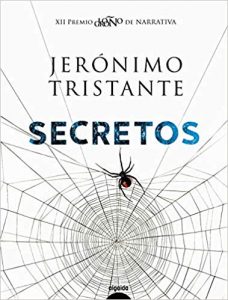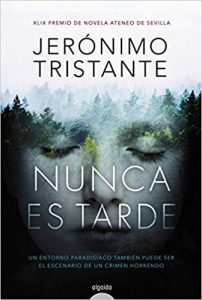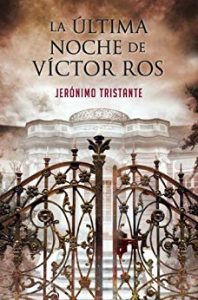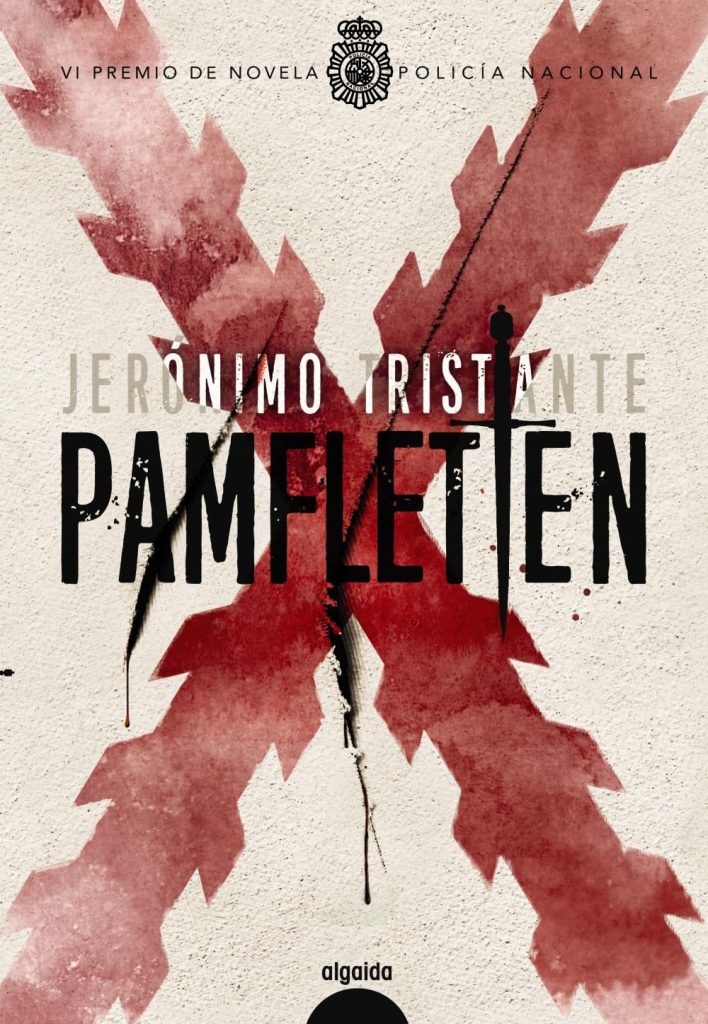The literary evolution of Jerónimo Tristante offers us a rich bibliographical composition from the historical setting to the noir genre. A genre of the latter of the criminal in which he begins to emerge thanks to his abilities to awaken the maximum tension already demonstrated in the mystery saga of the nineteenth-century inspector Víctor Ros, completed with a fantastic point that, in its proper measure, does nothing but praise that period of the nineteenth century mired in the enigmas of sepia photos.
And it is that the ingenuity of the writer devoted to the cause of posing mysteries in which the protagonist has to resort to deduction, is a good basis for the change of register to the most disturbing suspense. This is how Tristante approaches the Javier Sierra o John Gomez Jurado, the two greatest national authors in cultivating mysteries and harvesting thrillers.
But, incursions or gender variations aside, it is acceptable to recognize the good work of this author in a field of historical fiction that goes far beyond that Sherlock Holmes to the Spanish woman who is Víctor Ros.
Because in many other novels the historical goes from being a simple, brilliant and detailed plot setting, to compose an essential narrative body. And there you can also see that virtuosity of the novelist chronicler documented on past times, to finally insert a plot that runs parallel to faithful events of any century.
Be that as it may, without a doubt Jerónimo Tristante is always an author with whom to enjoy adventures, mysteries, enigmas or darker proposals.
Top 3 recommended novels by Jerónimo Tristante
Secretos
The great suspense or mystery stories gradually unmask a reality initially presented as something very different from what it finally is.
It is about scratching the tinsel to reach new layers where darker approaches settle. Jerónimo Tristante surrenders to the cause of the stripping of characters and circumstances in a social environment made a daily masquerade.
Not everyone is so happy in the elitist neighborhood that we are presented with (any resemblance to Altorreal, in Murcia is a mere coincidence), nor is love as true as it wants to appear. The subtle differences mark the border between the ultimate truth and the truth necessary.
In other words, appearances as a way of life in a social environment in which you are as much as you have, characters forced to show ostentation from the material to the most deeply emotional. Only, it is already known that you cannot hide a great secret forever, in the same way that you cannot stop thinking about a pink elephant once you are asked to think about a pink elephant.
What about Jerónimo Tristante and the stories about closed environments is already a trend set in his previous novel "It's never too late". And despite the fact that the settings of both novels are very different as we move from the Pyrenees to a high-class residential area, we find certain similarities in terms of some characters.
The truth sets us free, however crude it may be. And at least, in literature, this premise is fulfilled because as omniscient readers who can go from one side of the stage mirror to the other, at the rate proposed by the narrator, yes.
Thus, discovering both sides serves to anticipate the catastrophe, to know the last buried motives driven from envy, pride, unlimited ambition. In the select neighborhood of this story, we find potential victims of deception in everything from personal relationships to leaps into politics.
Gelen, the new neighbor is the engine that starts it all. She is willing to know the dirty laundry of so many residents of Altorreal. In the end, the story plunges into a strange terrain of suspense. There is not a concrete case but the general cause of the secrets. Gelen is learning more and more details of some characters who, thanks to his skill in putting them against the ropes, end up confessing from their goings-on and their corruption to their strangest affiliations.
And so, we enjoy a particular suspenseful plot saturated with strange expectations around this collection of dark intimacies. We fear for Gelen and relish each of his new discoveries in a bewildering modus operandi.
At the same time, the unveiling of that sum of lies, secret half-truths of moral or criminal charge invites us to delve into complementary aspects not so commonly addressed in a thriller.
Because each secret entails a break, a scratch from that tinsel that I initially cited towards the discovery of a chipped world, of a neighborhood in which houses shine while homes are barely supported on their pillars sunk in shifting earth.
It's never too late
Crime novels set in bucolic mountain scenery seem to have taken root as their own subgenre. The appearance of Dolores Redondo With his Baztán trilogy, he led to the launch of this type of novels.
In my case, being Aragonese, the new proposal by Jerónimo Tristante, focused on the Aragonese Pyrenees, as if it was my turn to begin with. But of course, with the exposed antecedents, you can always fall into the temptation to associate and compare ...
But the magic often lies in revisiting scenarios to end up transforming them under the style of each author. And that's what happens with this book is never too late, Ateneo de Sevilla 2017 award.
The title, knowing that we are dealing with a crime novel, seems to anticipate a pending case that can still be solved, or a drastic decision that ends up transforming reality towards the sinister ... It all begins with a girl who appears murdered in a costume of corpse, like macabre sarcasm.
The official investigation unfolds throughout the environment, but in parallel, Isabel Amat, more aware of the reality of the town and the surroundings, begins to link the case with a dark past that still survives as a distant echo in the consciousness of the locals.
In 1973 that same peaceful place between mountains suffered a brutal shake of sinister reality. Forty years later, the researchers are unable to put together both events, they do not possess the popular imagination, the myths and half-truths about that event that has been badly buried with the passage of time.
The mountains of the Pyrenees with their majestic appearance, the surrounding forests where visa overflows, all this has a double reading. In the interiors of every dark forest, the most unknown beasts of the past can survive, even the worst of beasts, the human predator capable of everything to appease their madness ...
The last night of Victor Ros
To enjoy a character in installments such as Víctor Ros, it is always better to give a good account of the entire saga to fully contextualize and to know the character with that detail of the creator himself.
But I certainly couldn't refer to the entire saga in this blog, so I'm going with the one that seemed most suggestive of all the adventures of this researcher in charge of traveling part of the Spanish geography in search of undoing the most sinister ties of evil. .
Without a doubt, this novel presents the most difficult case Ros has to face. Ramón Férez, murdered in front of his house, has so many enemies and potential assassins that the consideration of every clue passes through a mind capable of ordering this chaos and detecting those indications that guide it.
Víctor Ros travels to Oviedo to take charge of the case. Sometimes going on a trip, for whatever reason, leads one to reencounter with oneself, without conditions or routines. The problem is that Víctor Ros had not gone to Oviedo to settle accounts of his own life.
But things come this way, as entire coincidences or forced by some unexpected misfortune. The case of Ramón Férez ends up mysteriously surrounding the past of Víctor Ros. And when someone as shrewd as Ros is splattered by harsh reality, he may not be in the best position to close the case, putting new victims and even his own life at risk.
Other recommended novels by Jerónimo Tristant
The pamphlet
Yes, a title that sounds like what it sounds like, a pamphlet as an import from English that in turn took a Latin term that gave the title to a love story. Curiously, its ultimate meaning is political satirical, defamatory... And it began to be used a long time ago, precisely against the Spanish empire from Dutch lands.
Pamfletten addresses the eternal confrontation between good and evil: the hunt for a murderer in Flanders in 1576, during the occupation of the Tercios. The auditor Alonso Padilla will have to clarify the murders of several maids in Lier, a prosperous town between Antwerp and Brussels.
Barely two weeks have passed since the Antwerp sack and the climate is tense, since the Southern Provinces may join the rebels. Furthermore, Alonso - a peculiar individual to say the least who uses strange deductive and scientific methods - has to fulfill another order from the Secretary General in Brussels: capture an engraver, the Turk, whose engravings, called pamfletten, are making the Oranges win the battle. of propaganda.
Pamfletten is a detective novel set in the XNUMXth century, where, together with the investigation of some sadistic murders, it shows us what the famous Tercios of Flanders were like, how they lived, organized themselves, fought and how the complex political and strategic situation turned out after the occupation. of those lands by the best infantry of their time.




